Ableton today introduced their long-awaited third-generation Push hardware. The layout and functionality are familiar, but there’s new hardware including new pads, MPE support, and audio + CV + MIDI connectivity, plus standalone operation and upgradeability. CDM has talked to Ableton and tested the gear with prerelease software.
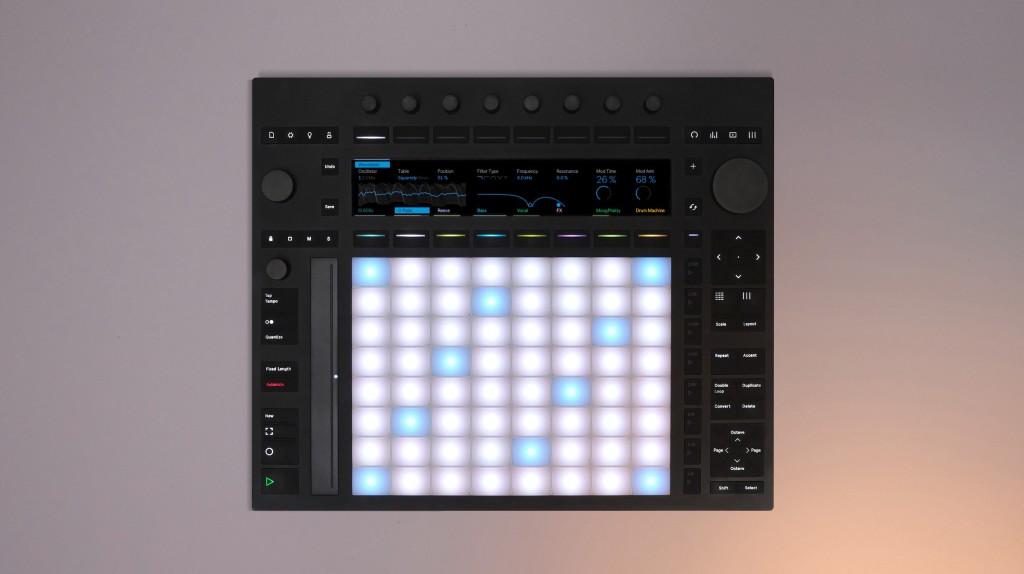
Standalone operation
DAWless DAW. First, the big banner feature: Ableton Push now has the ability to run without a connected computer. You can use Live’s internal Instruments, Audio Effects, and MIDI Effects, edit Clips and work with the Browser and Session View, all without a computer.
Two options. Push will come in two variations, one with standalone operation and one configured like its predecessors as a controller. Crucially, though, the guts are upgradeable. That means if you buy the controller now, you can add standalone operation later – essential for those on a budget or just wanting to see how invested they are in the hardware’s workflows. It also means the promise of upgrading Push to faster hardware down the road.
The guts of Push are upgradeable – buy a controller now, add standalone later, or conceivably update the hardware when faster chips become available.
Continuity. You can also drag samples and Sets to and from any new Push hardware on a wifi network. Push shows up directly in the Browser – alongside Cloud, where sessions from Ableton’s iPhone app appear. Ableton calls this Continuity mode, and it makes it a breeze to prep a set on your computer and move it over to the standalone hardware – or take a live jam you made on the hardware and bring it over to your computer to finish. (Continuity only works over wifi and only with the Push in standalone mode – not over USB-C, due to technical limitations of the hardware.)
Compatibility. Even Ableton and third-party Max for Live devices should eventually run on Push in standalone mode. For now, compatibility is incomplete even with the Max for Live devices included in Ableton Live Suite, but support is coming – more on that in detail separately.
What won’t work, of course, is third-party plug-ins – at least not yet. But the new Push is based on Linux with onboard Intel i3 hardware. It’s conceivable that Ableton could eventually open up the hardware to third-party Max or plug-in developers. There’s no statement about that yet, but Ableton is presenting the new Push as something of a new platform.
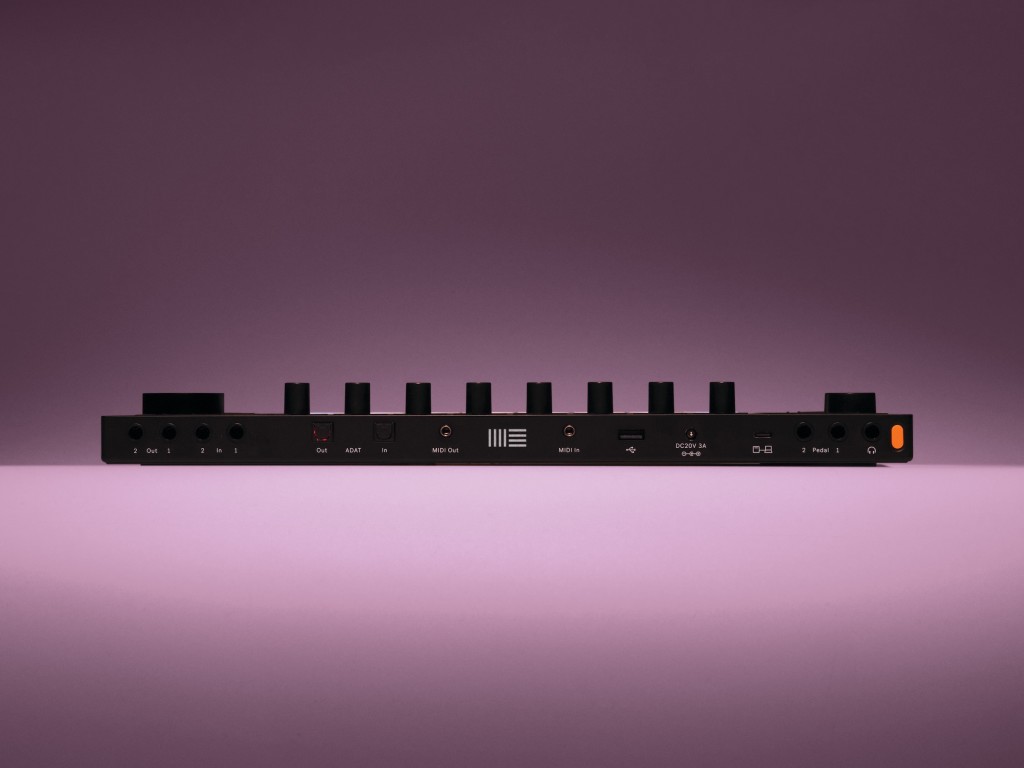
What’s new on the hardware
Finally, audio and MIDI – and CV. Whether you buy the standalone or controller configuration, Push now finally has some I/O onboard apart from just USB and pedals.
Analog audio is two in, two out on 6.35mm (1/4″) jack plugs.
But there’s also ADAT I/O, which gives you multichannel digital audio – ideal for use with digital mixers and other gear.
MIDI in and out is available on minijacks.
There’s also a USB A port which has USB host mode – for attaching other class-compliant MIDI controllers, like a keyboard or fader box.
The two pedal inputs have a surprise. These are DC-coupled and so can each be configured as CV outputs for use with analog and modular gear. They’re stereo TRS jacks, so you’ll need a splitter for them to function – but as a result, you get four CV outs. Ableton says they plan to release an accessory in the future.
(A standard adapter should work. Me, with decades of experience in music tech, I bought the wrong one twice. I was overexcited. What you want is TRS 1/4″ on one end, and two mono minijack sockets on the other. Beware the splitters that duplicate the stereo output on both sides – that’s what you want for a headphone splitter but not when you’re trying to connect two mono minijack connectors to Eurorack.)
You just set one option in Settings, load a device, and go – it’s terrifically easy. There’s a “Lite” version of the CV Tools from Ableton Live with presets that already lets you use CV outs in standalone mode. On the desktop, the four outputs appear as additional audio outs, so you can use any devices to send CV from there.
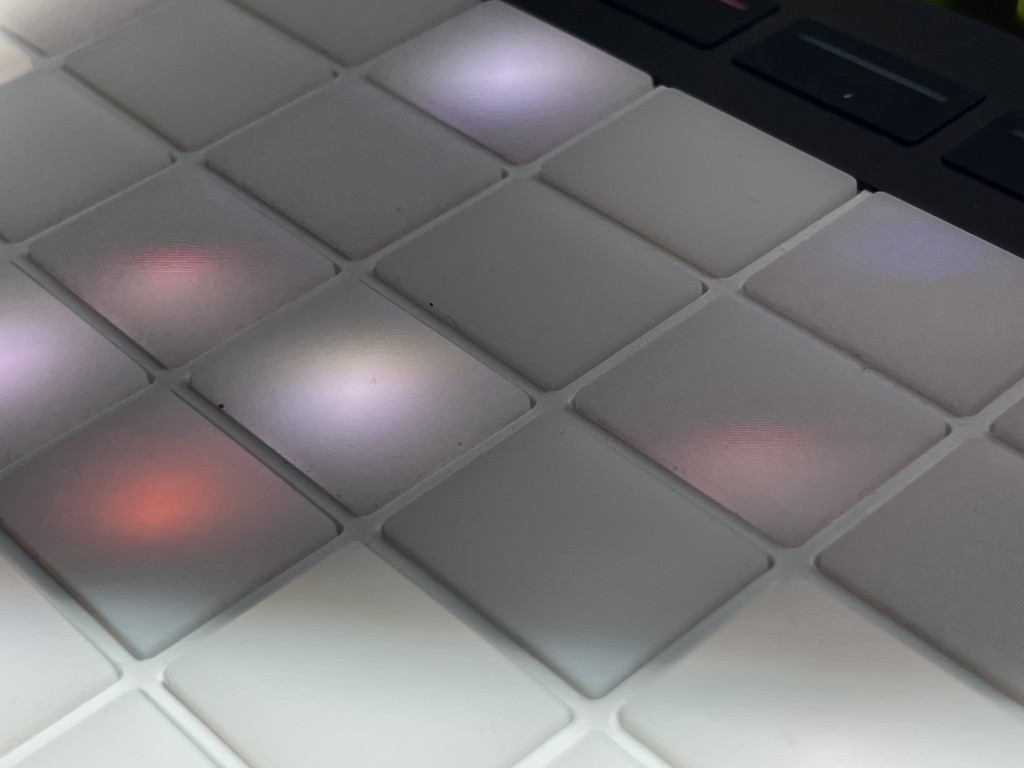
Expressive grid. Apart from the standalone option, central to the new design is a completely re-engineered expressive 8×8 pad grid, which now supports MIDI Polyphonic Expression. The grid looks different – from a distance, the easy way to spot the new hardware is its continuous white square. But more importantly, Ableton has reduced the vertical profile of the pads as well as the gaps between pads. It’s just as easy to hit the pads with your fingers, but now you can also slide between pads to bend and gliss.
Each individual pad is not only pressure sensitive, but sensitive to hits and gestures on X and Y. You can wiggle your finger to add vibrato, slide it around to add additional control, or configure each pad on X and Y to respond to hits on different parts of the pad for variations in pitch and timbre. You can even set up pads to track hits relative to the pad, or track your finger position as you play. The upshot of finger tracking is, you can add expression without everything becoming a sloppy mess if your finger drumming technique isn’t spot on.
I’ve tried all the MPE controllers, and this is the most expressive of any grid-based controller, by far. It’s an ideal balance of free-form expression with a grid-based pitch reference (as frets give you on an acoustic instrument).
Or to put it another way, you’ll be sliding and bending and adding vibrato and adding nuance to percussion.
Unfortunately, there hasn’t been an update to tuning or available scales – another reason why I look forward to more complete Max for Live support. You can use Microtuner, for one, already.
It’s an ideal balance of free-form expression with a grid-based pitch reference (as frets give you on an acoustic instrument).
Yes, it’s heavy. Okay, one other note – this thing is heavier than Push 1 and 2, at least in the standalone configuration I tested. (I didn’t yet take the internal hardware out to compare.) That’s apparently the fault of balancing out the heat sync and other hardware for its Intel innards.
USB-C and battery. USB-C is now onboard, and there’s a dedicated power port. It will operate and charge from just USB-C, though – hey, it’s the 2020s now. There’s an onboard battery, too, with battery life Ableton says can last over a couple of hours. Mainly, it’s a little hefty to use as a mobile gadget, but I’m glad to have the battery as a failsafe in case a power cable accidentally gets unplugged live.
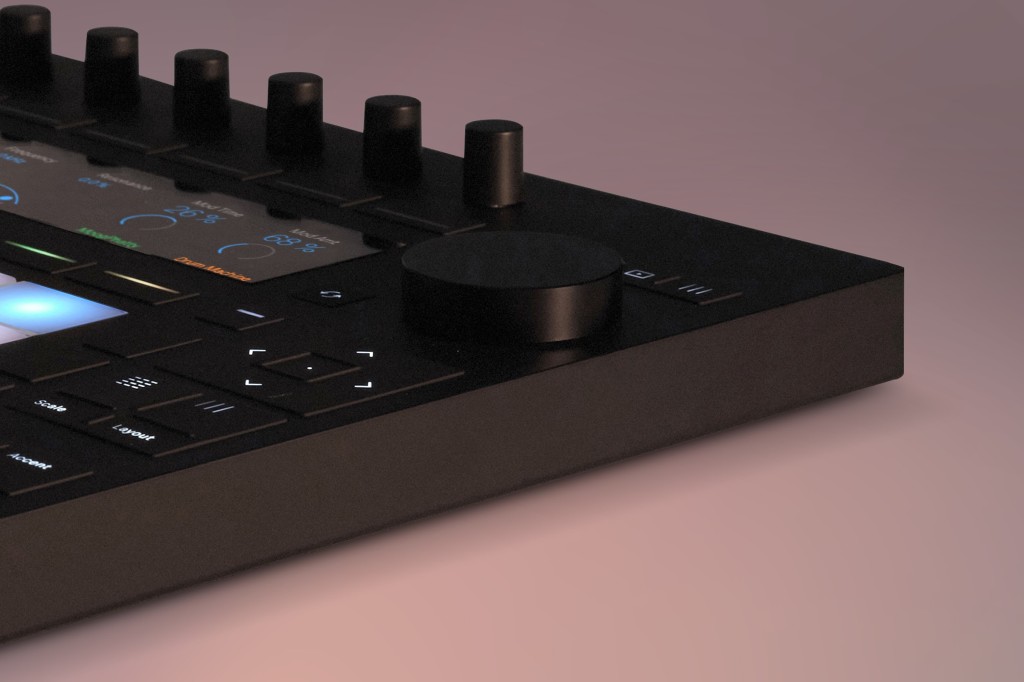
Refined workflow
Ableton hasn’t done much with the layout of Push – meaning existing users will likely familiarize themselves with the new hardware in a matter of minutes.
There’s been a ton of refinement to the controls and positions, but I’ll stick to the basics here.
The biggest change is, you get three new encoders. There are dedicated, touch-sensitive encoders for tempo and main output. (These have detents and are quite sturdy, so you won’t accidentally change the tempo or volume, though I did keep making their text overlays appear by brushing against them.)
There’s also a large wheel on the right with rocker settings that’s great for navigating through the Browser. (There is some confusion, though, to when this is the right knob to turn versus the directional pad buttons or an encoder above the display.)
It’s generally a lot easier to navigate Push and find controls. There’s still the usual task switching because of all Push does, but once you learn the controls – a couple of which have slightly obtuse icons – it feels natural, and it’s hard to go back to Push 1 or 2. I think Push stands out ahead of other standalone multifunctional devices, easily.
They also fixed some of the biggest issues with the past Push hardware. There’s a dedicated Capture button so it’s easier to save what you’re doing into a Clip. Clip editing is now nearly as easy on the hardware as it is onscreen – and it’s even easier to dial in some randomization or nudge beats around, which makes Push perfect for perfecting an organic groove.
Unfortunately, while there is now a “lock” button, it handles mute, solo, and stop click. It doesn’t lock a particular instrument as you play, which is a feature I’m still hoping for. New Push-point-one, please?
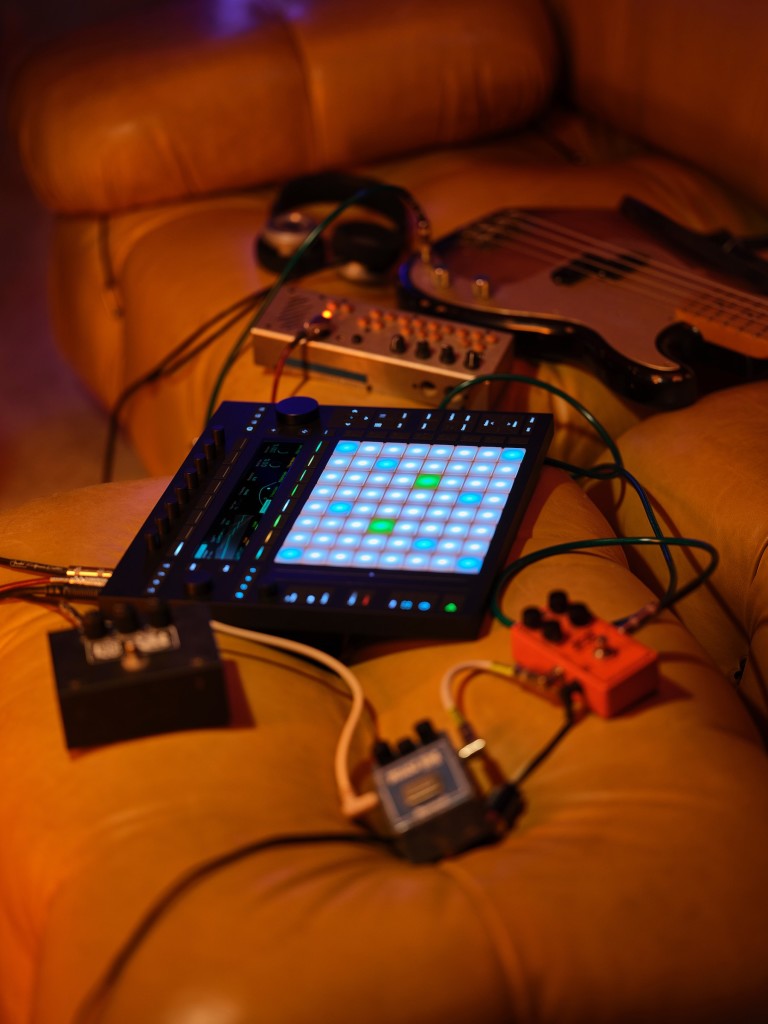
The two pedal inputs have a surprise. These are DC-coupled and so can each be configured as CV outputs for use with analog and modular gear.
First impressions
I realize that’s a whole lot of detail – there’s a lot to this hardware. But the real story of this gear is far simpler.
The expressive grid alone makes this a worthy upgrade, and it feels like a premium instrument – justifying the premium price. The grid is so good, and so sensitive to playing, that it’s easy to just buy this even as a dedicated MPE controller.
As a controller or standalone, the combination of the expressive pads and new control layout also make this feel like what Push always wanted to be. I’ll be honest, I always enjoyed using the Push hardware live and in the studio – but it was also just as easy to leave it aside. The new Push feels different. You just don’t want to be working with Live without this hardware at your side, once you’ve tried it.
The combination of audio, MIDI, and CV is also essential – once you have the right dongles.
Having this as a standalone instrument is great, though I think in the long run it’ll be Max for Live that puts it over the top. I love the idea of having this onstage running custom Max Devices and no computer.
But I can just as easily say, I think this is a winner even if you choose to save your money (and keep your third-party plug-ins) and use it in the controller configuration. That’s important, as it remains a big part of the Push value proposition.
Availability, pricing, and licensing
Push is available now.
- Push (standalone) – USD 1999 / EUR 1899
- Push – USD 999 / EUR 949
Upgrade Kits will be available in late 2023, and will cost USD 1049 / EUR 999
There’s one catch: the hardware ships with Live Intro. You still authorize Live with a purchased Live license. That includes the hardware in standalone mode – a departure from some competing hardware.
Upgrade and bundle pricing is available if you log in, but the short version is, you get a 25% off discount if you buy a new license or upgrade with the hardware. (Education users get the same 40% discount as they do without a hardware purchase; there’s no change.)
Purchases are available now, but I do expect we’ll see some additional software updates and things like the CV splitters shortly.
I’ll cover more technical details, hands-on impressions, and video separately. I’m curious to hear your thoughts in comments.




